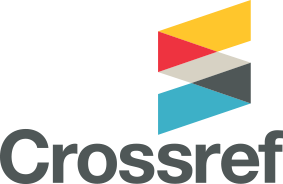PENGARUH LANTAI KANDANG ( RENGGANG DAN RAPAT) DAN IMBANGAN JANTAN-BETINA TERHADAP KONSUMSI PAKAN, BOBOT TELUR, KONVERSI PAKAN DAN TEBAL KERABANG PADA BURUNG PUYUH
Abstract
RINGKASAN
Penelitian dilaksanakan pada tanggal 27 Mei 2010 hingga 24 Juni 2010 di dusun Surowono desa Canggu Kecamatan Badas Kabupaten Kediri.
Tujuan penelitian yaitu untuk mengetahui pengaruh lantai kandang (lantai renggang dan lantai rapat) dan imbangan jantan-betina terhadap konsumsi pakan, bobot telur, konversi pakan dan tebal kerabang burung puyuh.
Materi yang digunakan adalah 24 ekor burung puyuh jantan ddengan Koefisien Keragaman (KK) 5,92 % dan 84 ekor betina dengan KK 4,85 % umur 60 hari. Metode penelitian adalah percobaan dengan menggunakan Rancangan Acak Lengkap (RAL) Pola Faktorial (2x4). Faktor pertama adalah lantai renggang dan lantai rapat. Faktor perlakuan kedua adalah imbangan jantan-betina 1:2, 1:3, 1:4, 1:5. Sehingga diperoleh 8 kombinasi perlakuan. Setiap perlakuan diulang 3 kali. Variabel yang diamati adalah konsumsi pakan, bobot telur, konversi pakan dan tebal kerabang. Data dianalisis dengan sidik ragam dan jika terjadi perbedaan yang signifikan antar perlakuan dilakukan Uji BNT (Beda Nyata Terkecil).
Hasil penelitian menunjukkan bahwa lantai kandang tidak memberikan pengaruh yang nyata (P > 0,05) terhadap konsumsi pakan, bobot telur, konversi pakan dan tebal kerabang. Imbangan jantan-betina berpengaruh sangat nyata (P<0,01) terhadap konsumsi pakan, bobot telur dan konversi pakan tetapi tidak berpengaruh terhadap tebal kerabang telur. Tidak terdapat interaksi antara lantai kandang dan imbangan jantan-betina (P > 0.05) terhadap konsumsi pakan, bobot telur, konversi pakan dan tebal kerabang.
Kesimpulan bahwa lantai kandang tidak mempengaruhi konsumsi pakan, konversi pakan, bobot telur dan tebal kerabang. Sedangkan semakin besar imbangan jantan-betina maka konsumsi pakan, bobot telur dan konversi pakan semakin menurun. Saran dalam pemeliharaan burung puyuh dapat digunakan kandang sistem lantai renggang atau lantai rapat dengan imbangan jantan-betina 1:4 pada pemeliharaan puyuh.
EFFECT OF CAGE FLOOR (SLAT AND LITTER) AND SEX RATIO ON FEED CONSUMPTION, EGG WEIGHT, FEED CONVERSION AND THICKNESS OF EGGSHELL IN QUAIL
Achmanu, Muharlien, Salaby Akhmat
ABSTRACT
The purpose of this study was to investigate the influence of cage floor type (slat and litter floor) and sex ratio on feed consumption, egg weight, feed conversion and thickness of quail’s egg shell. The results were expected to provide scientific information about using cage floor type and sex ratio of quail production and a scientific reference for researchers and other farmers for increasing the productivity performances of quails.
The material were 24 male quails and 84 female ones of 60 days old. The research method was experiment by using Randomized Completely Design (RCD),arranged factorialy (2x4). The observed variables were feed consumption, egg weight, feed conversion and thickness of eggshell. Data were analyzed with ANOVA and if there were significant differences between treatments then calculated with Least Square Different (LSD) test.
The results showed that cage floor type did not significantly effect (P>0.05) on feed consumption, egg weight, feed conversion and thickness of eggshell, while sex ratio had highly significant effect (P < 0,01) on feed consumption, egg weight, feed conversion and not significant effect on thickness of eggshell. There was no interaction effect (P> 0.05) between the cage floor and sex ratio on feed consumption, egg weight, feed conversion and thickness of eggshell.
The conclusions were cage floor type did not influenced the feed consumption, egg weight, feed conversion and thickness of eggshell. Sex ratio had influenced the feed consumption, egg weight, and feed conversion, but did not influenced the thickness of eggshell. The suggestion was by using slat or litter floor type of cage with a sex ratio 1:4 had a better quail egg production performance
Keyword : Cage, floor type , Sex Ratio, Feed Consumption, Egg Weight, Feed Conversion And Eggshell of Quail.
Refbacks
- There are currently no refbacks.

This work is licensed under a Creative Commons Attribution-NonCommercial 4.0 International License.










